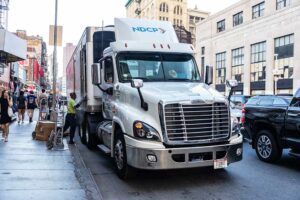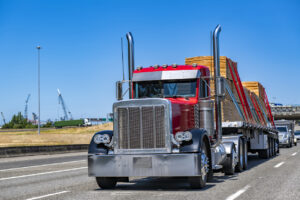WASHINGTON — The implications for changes in highway infrastructure driven by the wider deployment of connected and automated vehicles must be “recognized and addressed,” Wyoming Director of Transportation William “Bill” Panos has told a Senate committee.
Panos said autonomous vehicles “are increasingly connected and equipped with electronics that can receive data from [technology] installed in or near the roadway. Such signals help a vehicle ‘see’ in the snow or fog and provide other information. State DOTs can develop and deploy roadside infrastructure that can assist both automated driving system (ADS) equipped vehicles and increasingly advanced non-ADS equipped vehicles,” according to a report in the Journal of the American Association of State Highway and Transportation Officials (AASHTO).
Panos’ testimony came as part of “listening session” held by the Senate’s Committee on Environment and Public Works to determine how transportation infrastructure should evolve to accommodate connected and autonomous vehicles.
Panos, who also serves as chair of the committee on transportation system operations for the AASHTO, testified along with Shailen Bhatt, president and CEO of ITS America, Polly Trottenberg, commissioner of the New York City Department of Transportation, Zachary Doerzaph, director of the center for advanced automotive research at the Virginia Tech Transportation Institute, and Shaun Kildare, research director for the Advocates for Highway and Auto Safety.
Panos said in his remarks that autonomous vehicles “have the potential to decrease crashes and fatalities … not only of vehicle occupants, but also for highway maintenance and construction workers, bicyclists, and pedestrians,” the Journal reported.
Yet he stressed that “many questions” regarding autonomous vehicles remain, such as to how they will navigate through temporary highway work zones and handle variable speed limits.
“AASHTO’s member DOTs believe that establishing a strong foundation for autonomous vehicles requires ‘robust connectedness’ for vehicle-to-vehicle and vehicle-to-infrastructure communication,” Panos said. “But if autonomous and/or connected vehicpanos-wyo.jpgles rely on roadway sensors, that could place ‘upward pressure’ on the already high need for investment in maintaining and improving pavement quality.”
That’s but one reason Panos said state DOTs and other infrastructure owners are “uncertain” which particular roadway characteristics will be “critically important” to the safe and efficient operation of autonomous vehicles as aspects of them have been developed in the “absence of significant collaboration” between the infrastructure owners and technology developers.
It is such “collaboration” issues that Sen. John Barrasso, R-Wyo., chairman of the EPW committee, said he hopes to avoid as connected and autonomous vehicles begin operating on U.S. roadways in greater numbers.
“”We’re planning to build surface transportation infrastructure that will last for decades, so we need to understand the new challenges the next decades will bring to all of us [such as] the ongoing development and implementation of autonomous and connected vehicles,” he said in his opening remarks. “These and other innovations have the potential to fundamentally change the nature of how our nation’s infrastructure works.
“Autonomous vehicles will likely require modifications to our roadways and the practices of federal, state, and local transportation agencies. It is critical that federal and state transportation agencies are prepared and equipped to tackle the potential opportunities and challenges they present for our roads.”
Yet WYDOT’s Panos stressed in his testimony that such concerns aren’t slowing down the willingness on the part of state DOTs to test connected and autonomous vehicle technologies.
“About 33 locations in the U.S., including Wyoming, are deploying connected vehicle technologies under sponsorship of the U.S. Department of Transportation, while 17 locations are deploying them without sponsorship from USDOT,” Panos said. “Combined, that represents 72,000 vehicles on the road and 65,000 devices installed on the infrastructure. As the owners of a significant amount of the highway transportation infrastructure, state DOTs are at the forefront of preparing for deployment of connected and autonomous vehicles, including ensuring that the current infrastructure is in a state of good repair such that any vehicle can operate on it in a safe and effective manner.”
The Trucker News Staff produces engaging content for not only TheTrucker.com, but also The Trucker Newspaper, which has been serving the trucking industry for more than 30 years. With a focus on drivers, the Trucker News Staff aims to provide relevant, objective content pertaining to the trucking segment of the transportation industry. The Trucker News Staff is based in Little Rock, Arkansas.








Hello,
My name is Carla Lalngseth: I am a Wyoming AARP Lobbyist. One of the bills that I am following during our Legislative session is SF 16 Vehicles with Automated Driving Systems.
I would like to be able to follow Wyoming’s plans to test and regulate this system on our Wyoming roads. Could you tell me who to talk with regarding this adventure?